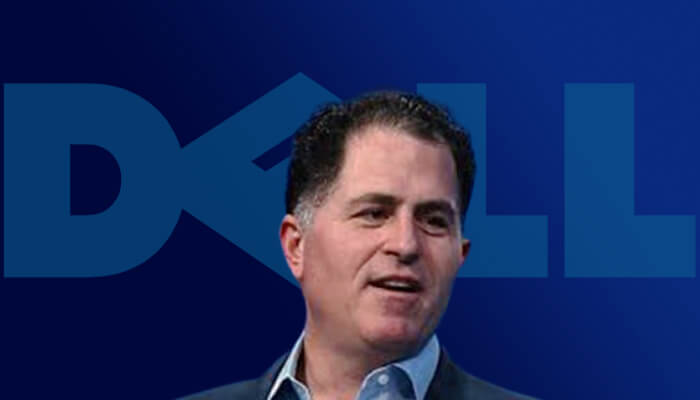Michael Saul-Dell founded the Dell Company in 1984. He merged to form Dell Technologies in 2016 with EMC Corporation. It became a multinational IT corporation in 2017, earning $61.6 billion in revenue. Michael Dell, the founder of Dell, has the legacy of building this brand.
Michael Saul Dell, who is he?
Michael Saul Dell is an American entrepreneur and the CEO, chairman, and founder of Dell Technologies. He is a business magnate who started Dell as a 19-year-old student at Austin, the University of Texas.
His company, by 1992, had earned $8 million in revenue and is now a Fortune 500 company exceeding revenues of $80 billion. On the Forbes list, Dell ranks 41st as America’s richest person and is on the world’s list of Powerful People at #4.
Our business is about technology, yes. But it’s also about operations and customer relationships.
The Early Life of Michael Dell
He was born in Houston, Texas, on February 23, 1965. His parents, Alexander Dell, and Lorraine Charlotte, were a stockbroker and his father was an orthodontist.
He grew up in Houston in an affluent neighborhood and enjoyed a good upbringing. He went to Herod Elementary and Jones High School.
Michael Saul Dell, as a teenager, got into computer programming due to his interest and started his business at 15 by selling door-to-door newspaper subscriptions. He graduated high school and, by that time, had earned from his business $18,000. He had money to pay at the University of Texas.
Michael founded in 1984, with his savings the Dell Technologies using credit card loans and summer jobs. He started his company, Startup Ecosystem, with PC assembly and his off-campus apartment was the place for local businesses. His humble beginnings led him to become the most successful entrepreneur.
How did Dell emerge?
He had an early interest in digital technology and business. By 12, he was selling coins and stamps to earn extra money. He did summer jobs and learned the workings of demand and supply and how to segment the market. He graduated from high school saving money to buy his BMW and Apple, his personal computer, and an IBM.
Michael Saul-Dell was curious about the machine’s inner workings and soon came to know IBM did not manufacture all the parts. He got the idea to get the source from other companies and to build his PC using the components. It was of higher quality and lower cost.
Challenges on the Path to Success
He was educating himself on computers. He worked on them and learned how to code. He attended network events and followed computer magazines. He was an expert at his high school and began modifying the PC. Soon he started customizing the professional PCs.
His friends and acquaintances were the first customers, impressed by his expertise and knowledge. Michael knew that customized computer demand was increasing, and he started assembling. He kept more storage capacity and memory at a fraction of the cost that people found appealing. He started directly buying components and started assembling machines.
By the time he ended his first year, he had a vendor’s license. He incorporated Dell Computer Corporation, his first company, and started winning bids in the industry.
1. Employees took on their responsibilities
The engineers helped the manufacturing line. Everyone would work, salespeople took new orders and fulfilled work for pending orders, and anyone would answer phone calls.
2. Direct customer relationships
The company spoke to customers on the phone directly. It got feedback and knew what the demand was. Thus, the ‘Direct Model’ came into birth.
3. A sense of difference
Dell employees knew the trouble of money rotation and financial statements. They took cheap solutions like using cardboard boxes instead of trash cans to throw trash.
Facing many such challenges, the company went to build to great lengths the direct model. The Direct Model offered clear benefits such as:
1. Single sales force solely focusing on end customers
2. Sales specialization to small customers and large corporations. It gave the best customer support.
There were disadvantages, but nothing could stop the Dell team and Michael Saul Dell. The strategy of Dell was effective, and it went public earning $85 million in market valuation.



